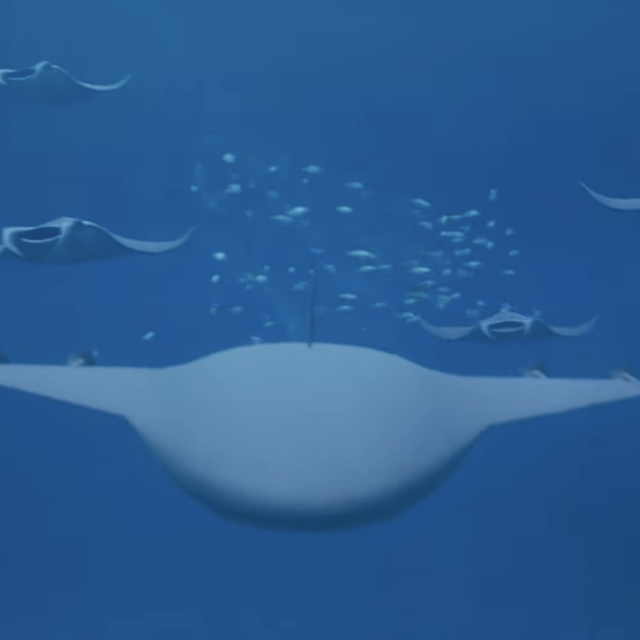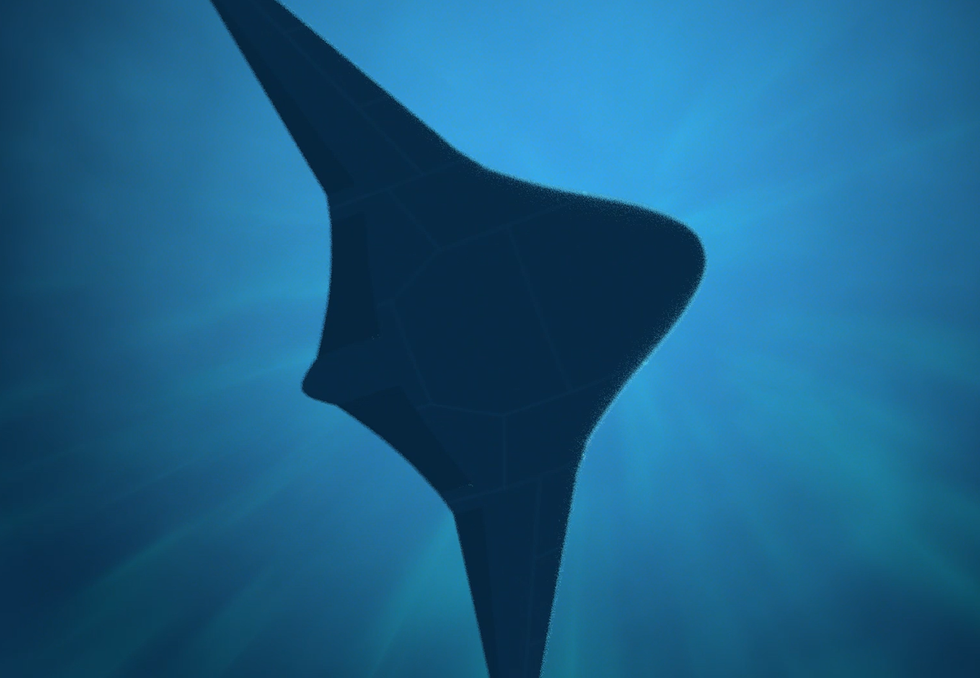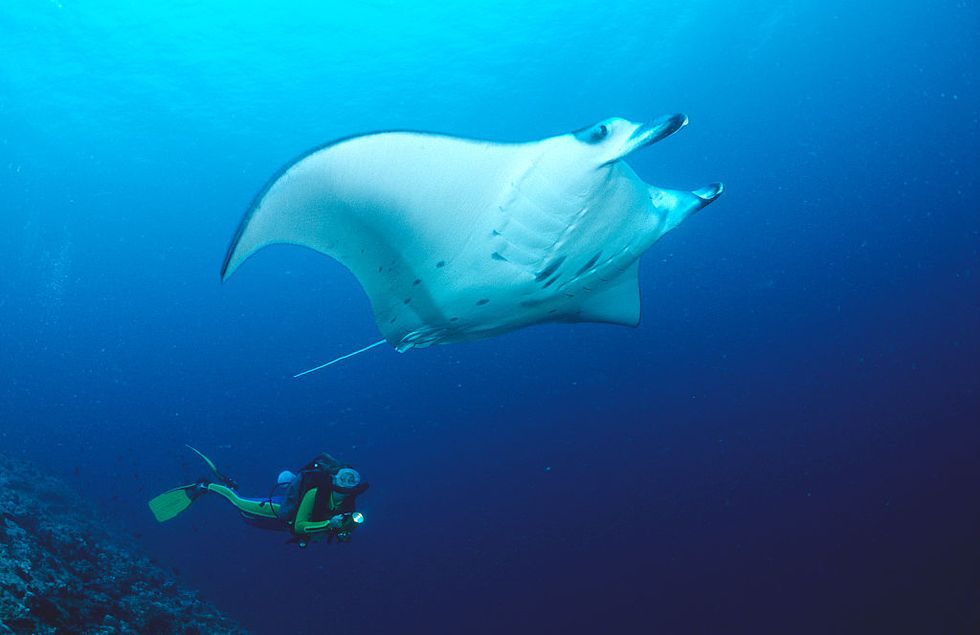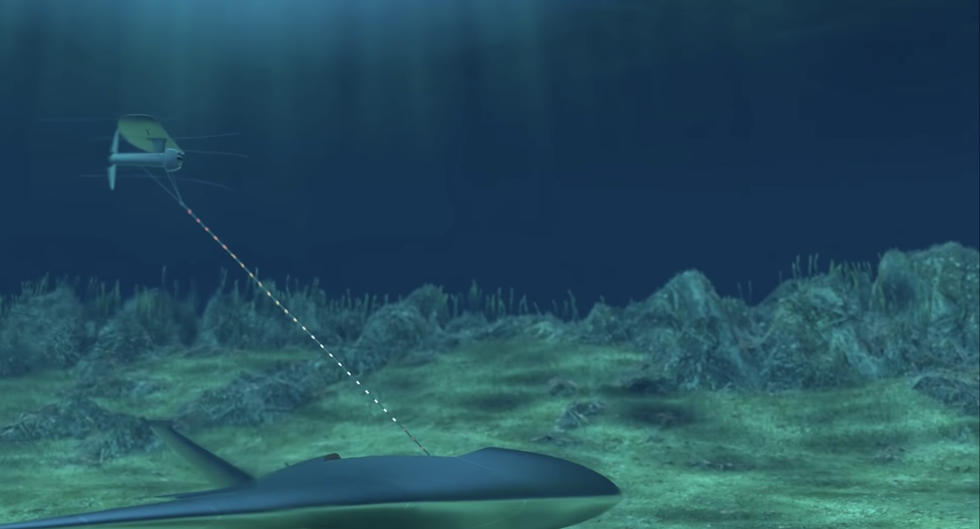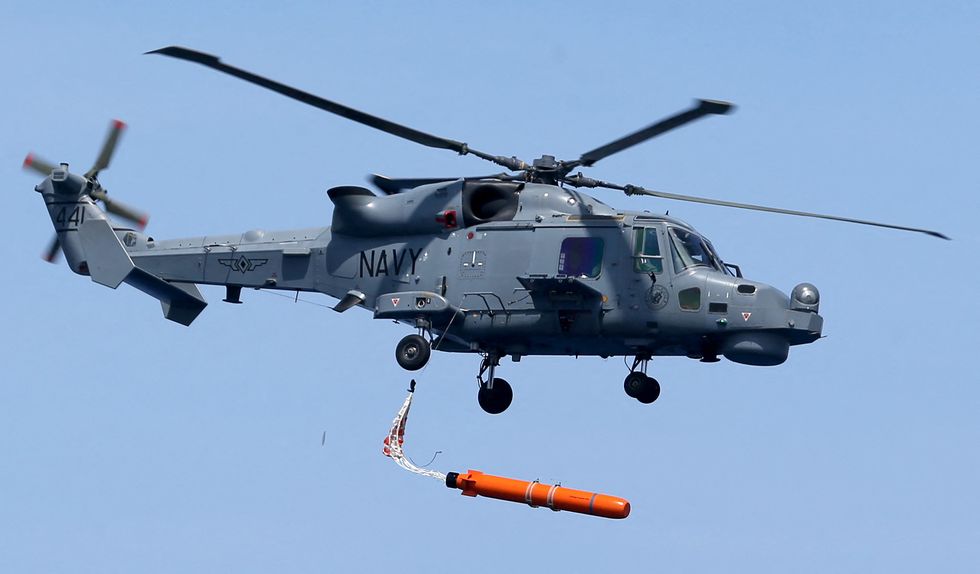- Northrop Grumman has unveiled its prototype unmanned underwater vehicle—the Manta Ray.
- The drone, which looks like a real manta ray, is an example of biomimicry.
- The drone will spend a lot of time operating autonomously, while carrying payloads such as sensors and weapons.
A new underwater drone that resembles one of the most graceful and majestic creatures in the ocean was unveiled today. The Manta Ray, built by Northrop Grumman, was built to perform long range, long endurance military missions. The underwater craft—built for the Defense Advanced Projects Research Agency (DARPA) and capable of harvesting energy from the seas—has been four years in the making.
DARPA Project
Manta Ray began life in 2020, and the project’s goal was to develop a “new class of long duration, long range, payload-capable unmanned underwater vehicles (UUVs).” Manta Ray is supposed to be capable of carrying out underwater missions with as little human oversight as possible.
This is not as easy as it sounds. Seawater is corrosive, sea life (such as barnacles, jellyfish, and seaweed) can foul moving parts, and various types of electromagnetic radiation (particularly sunlight) don’t propagate well in seawater. It’s a complex set of technical challenges that DARPA saw the opportunity to solve with a single program, advancing the state of the art in UUV technology.
Manta Ray is meant to advance the state of the art in UUV technology, addressing such issues as sea life “biofouling,” corrosion, the difficulty of low-power high-efficiency propulsion, and how to find a “low-power means of underwater detection and classification of hazards.” The result is supposed to be a low-maintenance drone in a high maintenance environment that can carry out underwater missions with as little human oversight as possible.
Copying Nature’s Homework
The Manta Ray is an example of biomimicry, or looking to nature for solutions to engineering problems. This is often most obvious in the development of aircraft, which need a mechanism for lift, and so have long looked to bird wings. Birds also often serve as an inspiration for engineers looking to make their aircraft more aerodynamic.
A manta ray’s body shape is extremely efficient for swimming underwater, allowing the giant animal to glide through the water with slow, graceful flaps of its wing-like fins. The gliding method allows them to “conserve energy and maximize movement efficiency.” This has worked so well for rays that they have remained relatively unchanged for 100 million years.
This mode of underwater ‘flight’ is also extremely useful to a drone that is designed to operate autonomously for long periods of time. Manta Ray doesn’t flap its wings, but it does (apparently) use small propellers to move itself along, and the less energy used by the propellers, the better.
Renewable Energy
One key requirement for Manta Ray is the ability to operate without the need for human intervention. The drone must not only use minimal amounts of energy, but also harvest energy from the sea. The ability to renew its energy supply keeps the size and weight of the drone down, making it smaller and more difficult to detect.
There are two ways to address the energy issue. One is solar power—recharging batteries from a solar array, ideally built into the skin of the drone. However, sunlight quickly dims the deeper it travels through the ocean, and the drone would likely have to rise to the surface to charge its batteries, making it vulnerable to detection.
Another possible source of power is wave energy. In a 2022 DARPA video (an image from which is captured above), the drone extends what appears to be a retractable wave energy harvesting device that converts the movement of water into electricity. This allows the drone to sit on the ocean floor and recharge its batteries without risking being spotted by the enemy.
Manta Missions
A drone that can carry out missions autonomously without need for refueling opens up a world of possibilities. One is the use of the Manta Ray as a surveillance system. For instance, in one video, the drone appears to be floating a hydrophone array. Hydrophones, otherwise known as passive sonar, are basically giant microphones that listen to the ocean for the telltale sounds of enemy submarines. They do not produce detectable emissions, use a minimum of electricity, and while they often collect enormous amounts of data, an AI could screen that data and forward only suspicious signals to human analysts for further study.
Currently, the Navy relies on specialized surface ships and some static hydrophone arrays to track submarines. The ships are relatively vulnerable to attack, and would have to be withdrawn in wartime. And the arrays, once their location is known, can be targeted for destruction. In the future, the Navy could deploy a fleet of dozens of Manta Rays equipped with hydrophones into, say, the South China Sea. From there, they could provide constant tracking of Chinese surface warships and submarines, as they move from one Manta Ray’s area of coverage to another.
Another mission could be anti-submarine warfare. While some Mantas could be used to locate and track enemy subs, other Mantas could carry weapons—such as the Mk 46 lightweight anti-submarine torpedo—and unleash them once a confirmed enemy sub came into range. An underwater fleet of Mantas could become a mobile anti-submarine kill web, capable of self-deploying from one area to another.
The command and control capabilities the DARPA program envisioned built into the drones means the system could learn over time, sharing new data about enemy submarines—things like their acoustic signatures, and the particular noises made by individual “boats.” The real manta ray may be a peaceful creature of the seas, but its robotic analogue has the potential to be a real killer.

Kyle Mizokami is a writer on defense and security issues and has been at Popular Mechanics since 2015. If it involves explosions or projectiles, he's generally in favor of it. Kyle’s articles have appeared at The Daily Beast, U.S. Naval Institute News, The Diplomat, Foreign Policy, Combat Aircraft Monthly, VICE News, and others. He lives in San Francisco.
